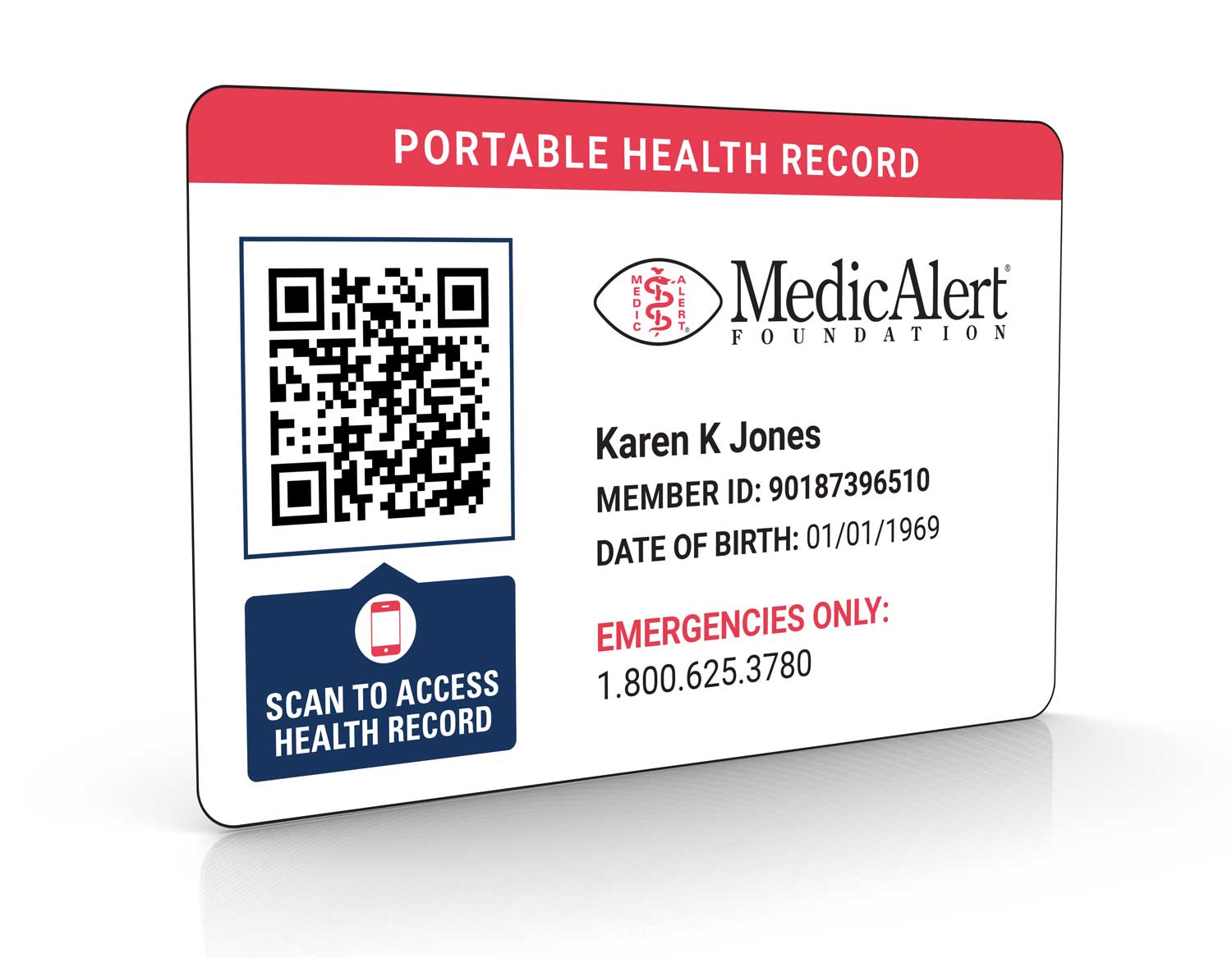Wearing something that shows that you have a bleeding disorder could save your life in an emergency. If you are in an accident, a medical ID lets the emergency team know that you have a bleeding disorder and how it’s treated.
Hemophilia of Georgia

Medical IDs for Hemophilia
The confidence to live with hemophilia
A bleeding disorder affects the way your blood normally clots. The body produces 13 clotting factors; if any of them are defective or deficient, a bleeding disorder can result. According to National Hemophilia Foundation more than 3 million Americans are living with hemophilia, von Willebrand disease (VWD), and other rare bleeding disorders (called rare factor deficiencies).
If you have a bleeding disorder, any cut or injury carries the risk of excessive bleeding. Because each type of bleeding disorder requires a very specific treatment, it’s vital for someone living with a bleeding disorder to always wear a hemophilia bracelet or other style of medical ID.
Medical IDs for hemophilia or other bleeding disorders provide peace of mind for those living with these conditions, as well as for their loved ones.
How MedicAlert protects those with hemophilia or other bleeding disorders
One thing you shouldn’t worry about is what could happen if there’s an emergency. MedicAlert’s protection plans offer benefits that extend beyond the ID, providing safety and peace of mind for people living with hemophilia or other bleeding disorders.

24/7 Emergency Response
Our team provides first responders the information they need to provide fast, accurate care.

Patient Instructions
Share the information that’s important to your care, such as use of rescue medications or contraindication for tests like MRIs.

Emergency Contact Notification
In an emergency, we connect families so that no one is alone in a crisis.

Digital Health Profile
All your vital information, all in one place for you and your caregiver.
Pair a medical ID for hemophilia or other bleeding disorder with the protection plan that’s right for you.
Types of hemophilia
There are two major types of hemophilia — type A and type B. Both types of hemophilia can be:
- Mild: Approximately 25% of cases are mild. A person with mild hemophilia has factor levels of 6–30%.
- Moderate: Approximately 15% of cases a moderate, and a person with moderate hemophilia will have factor levels of 1–5%.
- Severe: Approximately 60% of cases are severe, and people with severe hemophilia will have factor levels of less than 1%.
Hemophilia A occurs due to a lack of clotting factor VIII. More than half of people with hemophilia A have the severe form. This type of hemophilia is four times more common than hemophilia B.
Hemophilia B occurs in about 1 in every 25,000 males born worldwide. Colloquially known as Christmas disease, hemophilia A happens due to a lack of clotting factor IX.
Causes of hemophilia
The CDC states that hemophilia is a sex-linked recessive condition, which means that a person is born with the condition in the vast majority of cases. Hemophilia tends to occur in males because males inherit one X chromosome from the female parent and one Y chromosome from the male parent, rather than two X chromosomes.
Since the genetic change that causes hemophilia is a recessive change in the X chromosome, males are more likely to develop hemophilia because they have one copy of the genes in the X chromosome, while females have two copies.
For females to inherit hemophilia, the affected gene is in both X chromosomes, or the affected gene is in one X chromosome, and inactive or missing in the other. Females with one altered gene can be carriers and pass the condition to children.
In some cases, a person may spontaneously develop a gene mutation that causes hemophilia.
Rarely, a person may develop acquired hemophilia. Acquired hemophilia is an autoimmune condition where the body’s immune system starts to attack the clotting factors of the blood.
Symptoms of hemophilia
According to the CDC signs of hemophilia can include:
- bruising
- hematomas, which is when there is bleeding into the muscle or soft tissues
- nosebleeds that are frequent and difficult to stop
- bleeding from the mouth and gums
- blood in the stool
- blood in the urine
- bleeding into the joints
- bleeding after vaccinations or other injections
- bleeding after a circumcision
The severity of hemophilia can also affect symptoms. In mild cases, a person will most likely experience:
- easy bruising or hematomas
- spontaneous nose bleeds
- bleeding from the mouth or gums
- excessive bleeding following dental or other surgical procedures or injury
Symptoms for people living with the mild form may not show until adulthood.
In moderate cases of hemophilia, a person may experience:
- easy and excessive bruising
- excessive bleeding following surgeries or trauma
Doctors can often diagnose moderate cases by the time the person is 5 or 6.
In severe cases of hemophilia a person may experience spontaneous bleeding, often in the muscles or joints. This can lead to pain and swelling. Without treatment, bleeding into joints can result in arthritis in the affected joints. Doctors can often diagnose severe cases when the person is an infant.
What to engrave on MedicAlert medical IDs for hemophilia or bleeding disorders:
MedicAlert offers free custom engraving on all hemophilia bracelets and other medical IDs. Engravings on medical IDs for hemophilia should include any critical medical information that can protect and save your life if you are in an accident or have a medical emergency. For example:
- Hemophilia type
- Medical conditions
- Medications
- Implanted devices
- Allergies
- Any medical information that needs to be communicated to first responders

Sample engraving. Consult our team if you need help engraving your medical ID for hemophilia.
Diagnosis and treatment of hemophilia
Many people who have or have had family members with hemophilia will ask that their baby boys get tested soon after birth.
About one-third of babies who are diagnosed with hemophilia have a new mutation not present in other family members. In these cases, a doctor might check for hemophilia if a newborn is showing certain signs of hemophilia.
To make a diagnosis, doctors would perform certain blood tests to show if the blood is clotting properly. If it does not clot properly then clotting factor tests would be done, also called factor assays, to diagnose the cause of the bleeding disorder. These blood tests would show the type of hemophilia and the severity.
How medical IDs for hemophilia combined with MedicAlert Membership provide protection
Wearing a MedicAlert medical ID for hemophilia will communicate your bleeding disorder if you have an accident or medical emergency. Your medical ID for hemophilia will immediately alert emergency personnel to your condition, as first responders are trained to look for a medical ID.
First responders will contact MedicAlert to obtain your complete medical history. This information can help emergency professional treat you quickly and accurately. Wearing a medical ID for hemophilia can save your life.
- We’re your voice: If you can’t speak for yourself due to an accident or other medical emergency, your ID will speak for you – informing others about your hemophilia and any medications you’re taking.
- 24/7 emergency protection: In an emergency, the MedicAlert team will relay all of your critical medical information to first responders, no matter where or when your emergency happens.
- Always connected: You should never be alone in an emergency. That’s why MedicAlert will reach out to your designated contacts if you are unable to do so.
- Live with peace of mind and confidence: MedicAlert will be there for you every step of the way. You’ll have the confidence and freedom to live your life with hemophilia, knowing we’ve got you covered.
DISCLAIMER: THIS WEBSITE DOES NOT PROVIDE MEDICAL ADVICE. The information in this article is presented for educational purposes only and is not intended as a substitute for professional medical advice, diagnosis and treatment. Always seek the advice of a physician or other qualified healthcare provider for any questions you may have regarding a medical condition or treatment.








